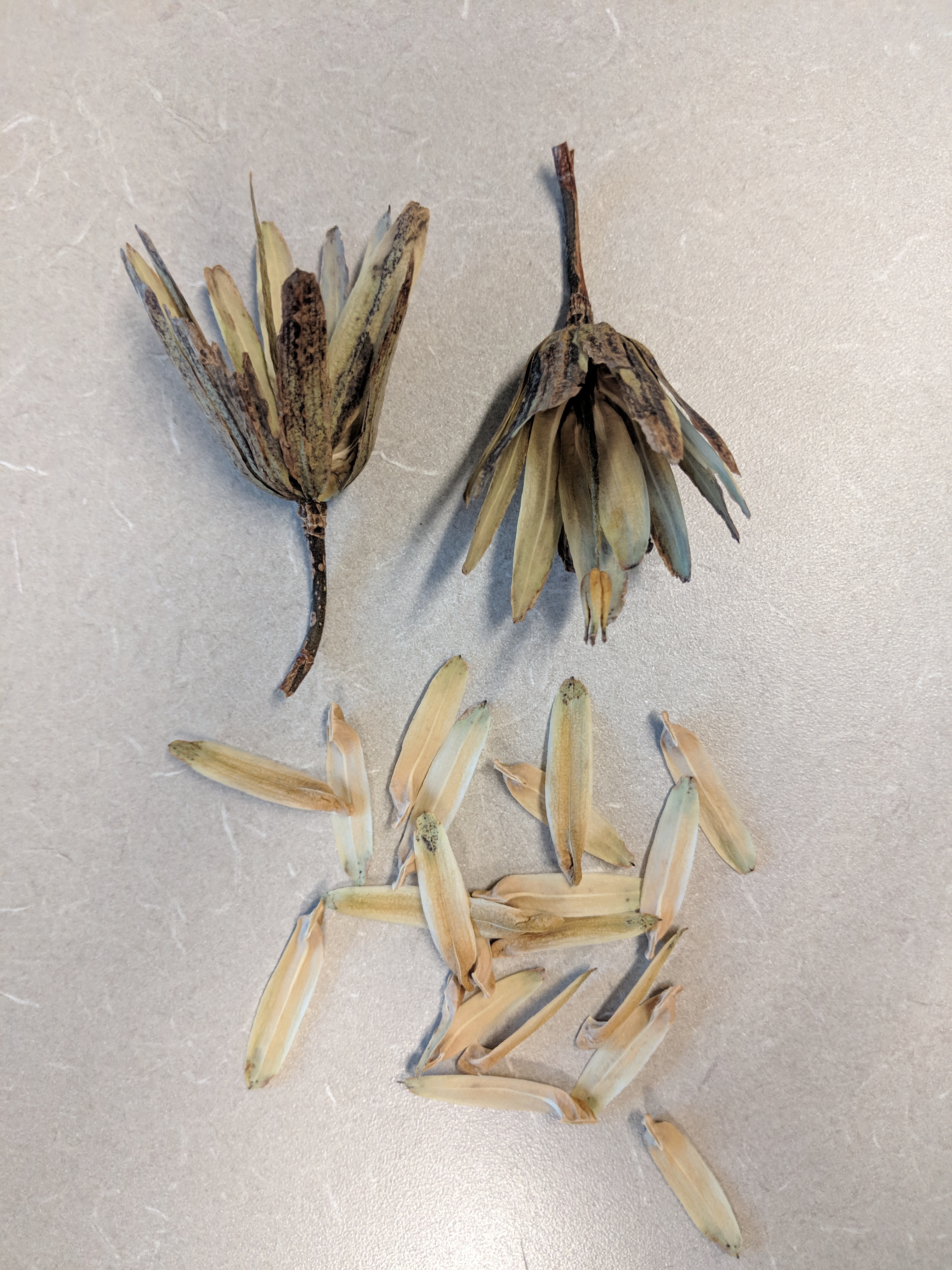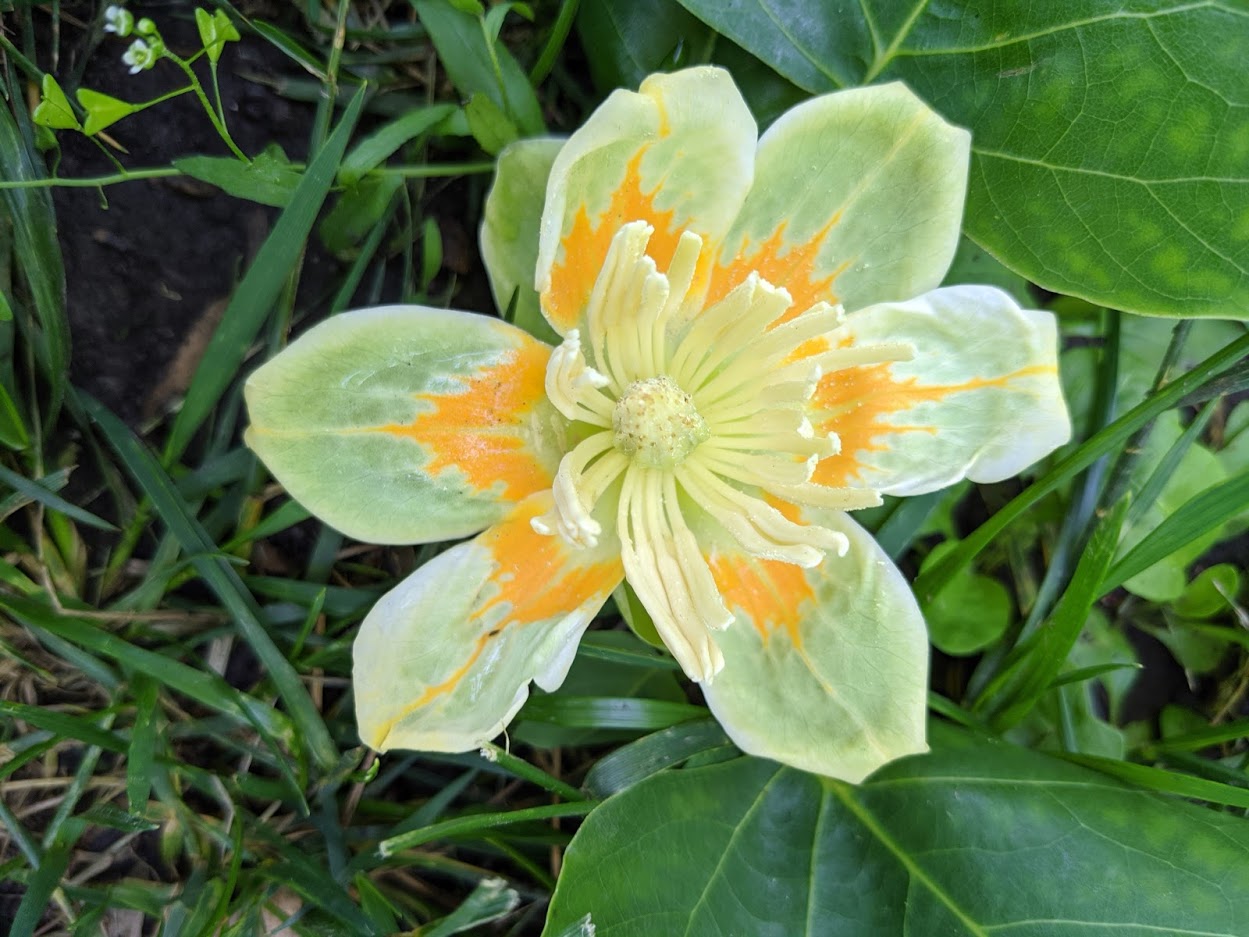Common Name: tulip tree, yellow poplar
Scientific Name:
Family: Magnoliaceae
Genus: Liriodendron
Species: L. tulipifera
Hardiness Zone: 4 to 9
Height: 60 to 90 ft
Width: 30 to 50 ft
Common characteristics:
Tulip tree is named and noted for its cup-shaped, tulip-like flowers that bloom in spring. It has showy flowers that are yellow with an orange band at the base of each petal. Although the flowers are 2” in length, they can go unnoticed on large trees because the flowers appear after the leaves are fully developed. Later in the season, the brightly colored petals will fall and collect at the base of the tree. It can grow 60 to 90 ft in height and maintains a very upright form and has a canopy spread of 30 to 50 ft. Liriodendron tulipifera is the state tree of Kentucky, Indiana, and Tennessee, but it still does well in Minnesota's harsher climate under the right growing conditions.
Where it grows:
Tulip tree prefers moist, well-drained, slightly acidic soils and is tolerant of more alkaline soils. The tulip tree is intolerant to salt spray and salty soils. The tulip tree's fleshy root system prefers being transplanted in early spring, rather than autumn. A consistent supply of moisture is necessary for tulip trees and can suffer from leaf yellowing when planted in a dry site.
How it’s used:
Best planted in a yard or park as a shade tree. Can be used in a boulevard given there is enough room. Planting should be done to allow for a 30 to 50 ft canopy.
Ecosystem services:
Flowers of the tulip tree are used by insect pollinators. The tree is also a good habitat and food source for Sapsuckers, Songbirds, and small mammals. Wood is used for furniture, plywood, boatbuilding, paper pulp, and general lumber. The trunks of tulip trees were used by Native Americans to make dugout canoes.
Where it is native to:
Native throughout most of eastern United States. Can be successful in Minnesota.
Known Varieties and Their Traits:
Emerald City® tuliptree (Liriodendron tulipifera 'JFS-Oz'): Darker green foliage than the species; turns a clear yellow in fall. Upright, oval from growing 55 feet high and 25 feet wide.
Little Volunteer tuliptree (Liriodendron tulipifera 'Little Volunteer'): A dwarf cultivar, growing 30 to 35 feet high (about 1/3 the size of the species) and 18 to 20 feet wide. The leaves are also smaller than those of the species.
Upright tuliptree (Liriodendron tulipifera 'Arnold' or 'Fastigiatum'): A narrow form with upright branching; grows 50 feet high and 15 feet wide.
Problems:
Potential diseases include verticillium wilt, mold, mildew, and canker. Aphid and scale infestations are possible. Large aphid infestations result in honeydew secretions on the leaves that provide the growing medium for sooty mold. The tulip tree is fast-growing and somewhat weak wooded, making them susceptible to limb breakage in high winds or from ice/snow.
References:
Missouri Botanical Garden

